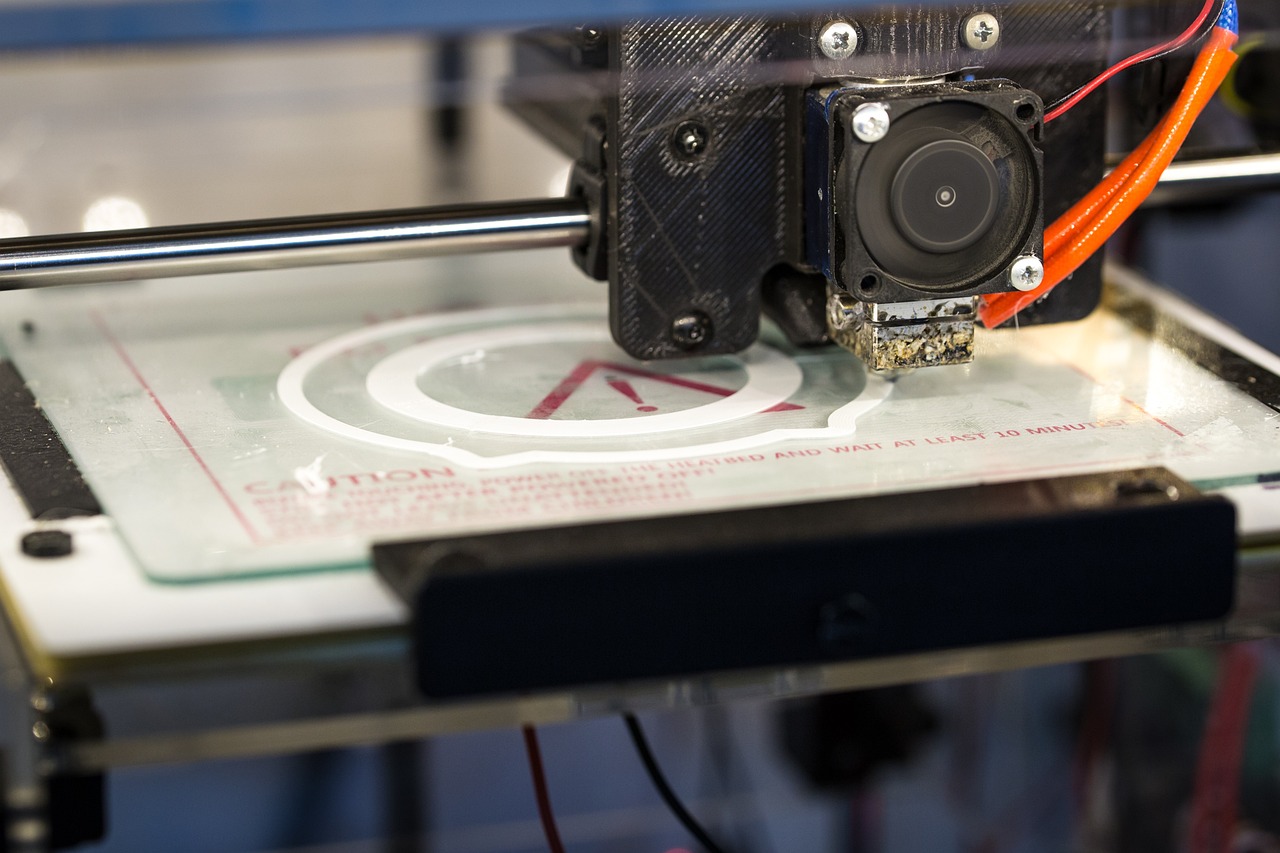FUSED DEPOSITION MODELING (FDM)
- FDM technology can go about building quick prototypes with strength and speed, at a very economical price in a wide range of thermoplastic materials, which makes it a very attractive option.
Upload files in Get Quote section and get quote within 4 hrs
Technically qualified team in various mfg. technologies
Highly competitive price and bulk discounts also available
All designs and data are kept in highly secure private server
Fused Deposition Modeling (FDM), or Fused Filament Fabrication (FFF), is an additive manufacturing process that belongs to the material extrusion family.
In FDM, an object is built by selectively depositing melted material in a pre-determined path layer-by-layer. The materials used are thermoplastic polymers and come in filament form.
I. A spool of thermoplastic filament is first loaded into the printer. Once the nozzle has reached the desired temperature, the filament is fed to the extrusion head and in the nozzle where it melts.

II. The extrusion head is attached to a 3-axis system that allows it to move in the X, Y and Z directions. The melted material is extruded in thin strands and is deposited layer-by-layer in predetermined locations, where it cools and solidifies. Sometimes the cooling of the material is accelerated through the use of cooling fans attached to the extrusion head.
III. To fill an area, multiple passes are required (similar to coloring a rectangle with a marker). When a layer is finished, the gantry system housing the extrusion head moves up and a new layer is deposited. This process is repeated until the part is complete.

The support structure is essential for creating geometries with overhangs in FDM because melted thermoplastic cannot be deposited in thin air. Surfaces printed on support will generally be of lower surface quality than the rest of the part. For this reason, it is recommended that the part is designed in such a way as to minimize the need for support.
Support is usually printed in the same material as the part. Support materials that dissolve in liquid also exist, but they are used mainly in high-end desktop or industrial FDM 3D printers. Printing on dissolvable supports improves significantly the surface quality of the part but increases the overall cost of a print.
FDM parts are usually not printed solid to reduce the print time and save material. Instead, the outer perimeter is traced using several passes, called the shell, and the interior is filled with an internal, low-density structure, called the infill. Infill and shell thickness affect greatly the strength of a part.
| TENSILE STRENGTH(MPA) | FLEXURAL STRENGTH(MPA) | IMPACT STRENGTH(MPA) | MELTING TEMPERATURE°C |
|---|---|---|---|
| 62.63 | 65.02 | 4.28 | 190 – 220 |
| TENSILE STRENGTH(MPA) | FLEXURAL STRENGTH(MPA) | IMPACT STRENGTH(MPA) | MELTING TEMPERATURE°C |
|---|---|---|---|
| 62.63 | 65.02 | 4.28 | 190 – 220 |
| TENSILE STRENGTH(MPA) | FLEXURAL STRENGTH(MPA) | IMPACT STRENGTH(MPA) | MELTING TEMPERATURE°C |
|---|---|---|---|
| 62.63 | 65.02 | 4.28 | 190 – 220 |
| TENSILE STRENGTH(MPA) | FLEXURAL STRENGTH(MPA) | IMPACT STRENGTH(MPA) | MELTING TEMPERATURE°C |
|---|---|---|---|
| 62.63 | 65.02 | 4.28 | 190 – 220 |
| TENSILE STRENGTH(MPA) | FLEXURAL STRENGTH(MPA) | IMPACT STRENGTH(MPA) | MELTING TEMPERATURE°C |
|---|---|---|---|
| 62.63 | 65.02 | 4.28 | 190 – 220 |
| TENSILE STRENGTH(MPA) | FLEXURAL STRENGTH(MPA) | IMPACT STRENGTH(MPA) | MELTING TEMPERATURE°C |
|---|---|---|---|
| 62.63 | 65.02 | 4.28 | 190 – 220 |
| TENSILE STRENGTH(MPA) | FLEXURAL STRENGTH(MPA) | IMPACT STRENGTH(MPA) | MELTING TEMPERATURE°C |
|---|---|---|---|
| 62.63 | 65.02 | 4.28 | 190 – 220 |
| TENSILE STRENGTH(MPA) | FLEXURAL STRENGTH(MPA) | IMPACT STRENGTH(MPA) | MELTING TEMPERATURE°C |
|---|---|---|---|
| 62.63 | 65.02 | 4.28 | 190 – 220 |
| TENSILE STRENGTH(MPA) | FLEXURAL STRENGTH(MPA) | IMPACT STRENGTH(MPA) | MELTING TEMPERATURE°C |
|---|---|---|---|
| 62.63 | 65.02 | 4.28 | 190 – 220 |
Minimum Wall thickness: 1.2 mm
Minimum details size: 2 mm (for text/ hole diameters etc)
Layer thickness: 0.1 mm – 0.3 mm
Max dimensions: 500 x 500 x 500 mm. (For larger parts, it can be created with assembling individual parts by interlocking designs or glueing together. Please contact us for further support.)
Standard Accuracy: ± 0.3% (with lower limit on ± 0.3 mm).
Lead Time: Minimum 2 working days for dispatch
Surface finish: Visible layers with texture.
Fused Filament Fabrication (FFF) is the same process as FDM. The two terms can be used interchangeably. FFF uses a filament material that is layered and then fused, just like FDM. Fused Deposition Modeling was initially invented and trademarked by Stratysys, Inc. in 1988. The patent did not expire until 2009. To avoid trademark violations, other 3D printing companies began to reference the technology as Fused Filament Fabrication.
I am item content. Click edit button to change this text. Lorem ipsum dolor sit amet, adipiscing elit. Ut elit tellus, luctus nec mattis, pulvinar dapibus leo.
I am item content. Click edit button to change this text. Lorem ipsum dolor sit amet, consectetur adipiscing elit. Ut elit tellus, luctus ullamcorper mattis, pulvinar dapibus leo.
I am item content. Click edit button to change this text. Lorem ipsum dolor sit amet, consectetur adipiscing elit. Ut luctus nec ullamcorper mattis, pulvinar dapibus leo.
I am item content. Click edit button to change this text. Lorem ipsum dolor sit amet, adipiscing elit. Ut elit tellus, luctus nec ullamcorper mattis, pulvinar dapibus leo.